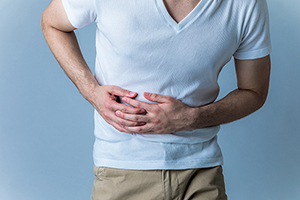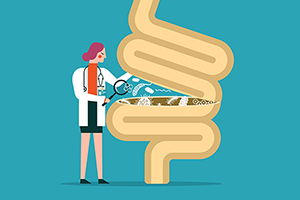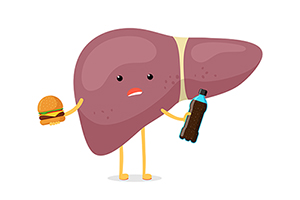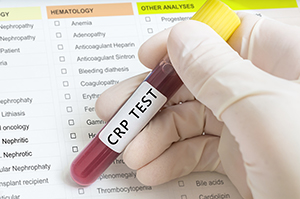



| By Dr. Ronald Hoffman
Gallbladder disease is a modern illness. An estimated 20 million Americans have gallbladder disease. The sole function of the gallbladder is to store bile, which is produced in the liver and aids in the digestion of fats in the small intestine. The gallbladder has become a prime target for surgical intervention; in fact, this is the most common type of major surgery. Sometimes it’s done to reduce pain, sometimes to remove gallstones. It’s especially common among women who are receiving estrogen replacement therapy, since estrogen stimulates the production of gallstones. (Accordingly, women with gallstone problems are probably not good candidates for oral estrogen replacement; they might do better with a transdermal estrogen patch.) This is a degenerative disease that’s clearly related to diet. A study performed at the University Hospital of Riyadh, Saudi Arabia, found that the incidence of gallbladder surgery went up by 600 percent in that country as the people shifted from a simpler, nomadic existence, eating traditional foods, to a more sedentary lifestyle “enriched” by all the sugary, fat-laden foods of the developed world.
In gallbladder disease, bile in the gallbladder becomes concentrated and thickens. Gallstones are born out of this sludge from cholesterol and bile salts. The end result of the disease process is inflammation (cholecystitis) or stones (cholelithiasis). A gallbladder attack occurs when the gallstone blocks the flow of bile from the gallbladder and is manifested as a pain in the right side (sometimes perceived in the right shoulder because of referred pain) as severe as the excruciating pain of a heart attack.
Some factors that contribute to the development of gallbladder disease are:
Having gallstones doesn’t mean that one should rush right out, consult a surgeon, and schedule major surgery. You can live with gallstones and be symptom-free. Physicians have noticed that certain foods can initiate a gallbladder attack in patients who have gallstones. When these foods were eliminated from their diet, their gallbladder symptoms disappeared. In explanation, it is thought there might be a food allergy mechanism at work, wherein the gallbladder responds to the allergy-producing food with symptoms of a gallbladder attack.
The most frequently offending foods are eggs, pork, onions, poultry, milk, coffee, oranges, corn, beans and nuts.
Rose, a 61-year-old woman from Virginia, came into my office for gallbladder complaints. She had been advised to have surgery, but her daughter encouraged her to get a second opinion. I determined that she was not in any immediate danger and gave her a modified version of the “gallbladder disease elimination diet” by Dr. James Breneman. (This is not a “do-it-yourself” diet but should be monitored by a physician.) This diet eliminates the most commonly offending foods outlined above. Besides having Rose increase the fiber in her diet, I also gave her lecithin and certain herbs, such as artichoke and dandelion, that help drain bile from the gallbladder. For several weeks, Rose was symptom-free, except on one occasion when she slipped from her diet. This was a gradual, gentle diet plan— crash diets actually can precipitate gallstones.
Still on the diet after three months, she had lost 12 pounds, had a 65 point reduction in her cholesterol level, was symptom-free and felt great. Fifteen years later, she still hasn’t required surgery, even though surgical methods are simpler now and are prescribed more often.
With the advent of laser laparoscopic surgery in this country, it’s much easier to take gallbladders out. As a result, the surgery rates for this disease have almost doubled. Does it make sense to perform so much more surgery merely because it’s easier? To some extent, yes, because it’s not as perilous as before and doesn’t require such a long hospital stay. But this new technique has made the gallbladder an easier and more tempting target for surgeons, and it has made people less reluctant to undergo surgery that may not be entirely necessary.
A reaction is setting in, however, as more doctors realize that most painful gallbladders can be left alone once they’re mostly quiescent, with just the occasional painful attack. In fact, the pain generally can be reduced by dietary measures: lowering fat and sugar intake or avoiding problem foods such as eggs, poultry or pork. The presence of gallstones in itself doesn’t seem to warrant surgery—the new belief is that you can happily take them to your grave. There are some exceptions: people with diabetes in particular may be well advised to have the surgery. Since they sometimes have nerve difficulties and don’t get clear-cut pain signals, they run the risk of complications from silent or unperceived gallbladder attacks and might wind up with a ruptured gallbladder. Surgeons are aware of this, and they operate decisively in these cases.
I’ve seen many people, however, who suffered from gallbladder pain, had the operation and then suffered from a postoperative syndrome: The stones were out but they still had pain. And that’s pretty aggravating, because their doctor suggested that the stones were the source of the pain. In some cases, the gallbladder is removed only to reveal that it wasn’t the source of the pain, that there was some other somatic cause unrelated to whatever stones or sludge might have appeared in the gallbladder.
So if your gallbladder is really shot and if you’re having pain all the time, have it out. But most people can pretty well poke along with an asymptomatic gallbladder. Sporadic gallbladder attacks that respond to diet changes and the presence of gallstones identified by sonogram are not in themselves an indication for surgery. The pain can be brought under control with dietary modification, and the presence of the stones by itself doesn’t mean you need to have them taken out. But this is how it’s presented to people. Surgeons will show you a sonogram of a gallbladder laden with stones as a selling point to get you on board for the surgery. It can be hard to resist this kind of pitch from a medical expert, but unfortunately this represents a situation that patients often find themselves in.
If needed, there are several surgical methods of treatment available as well as medical treatments for gallbladder disease. They include:
Though we think of declining estrogen as the hallmark of menopause, it's actually common for…

Up to 12 percent of Americans have ulcers at some point in life. Peptic ulcers…
Gallbladder disease is a modern illness. An estimated 20 million Americans have gallbladder disease. The…

There’s more to GI health than whether or not to take an acid-blocker. All too…

In the latest attempt to remove “stigma” from medical terminology, liver specialists have come up…

Q: My husband’s high sensitivity C-reactive protein (hs-CRP) is 1.62 and his homocysteine is 13.1. If…

Banish the Bloat: Leyla Weighs In with Tips and Insights

Our virtual voicemail is open 24/7, so there's no need to wait to submit your questions for Dr. Hoffman. Leave a message, and you may hear your question featured on the Intelligent Medicine radio program!